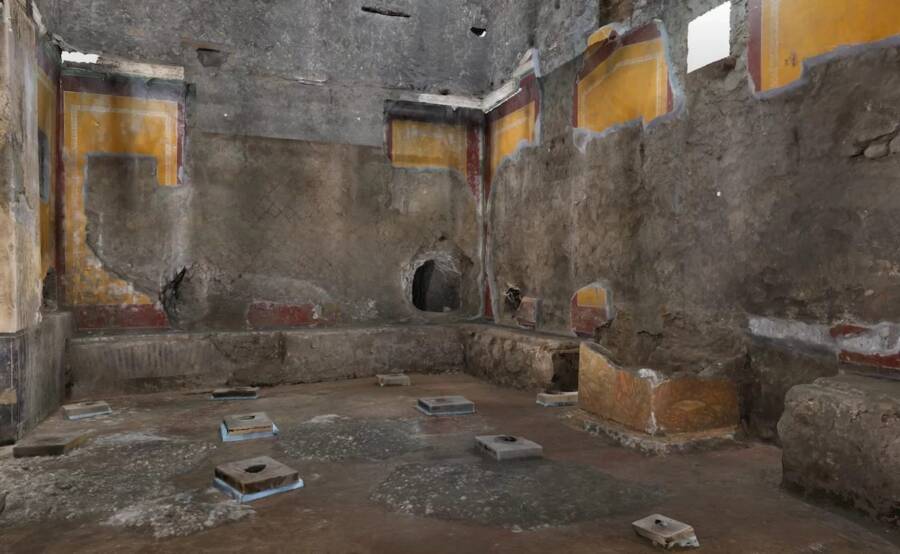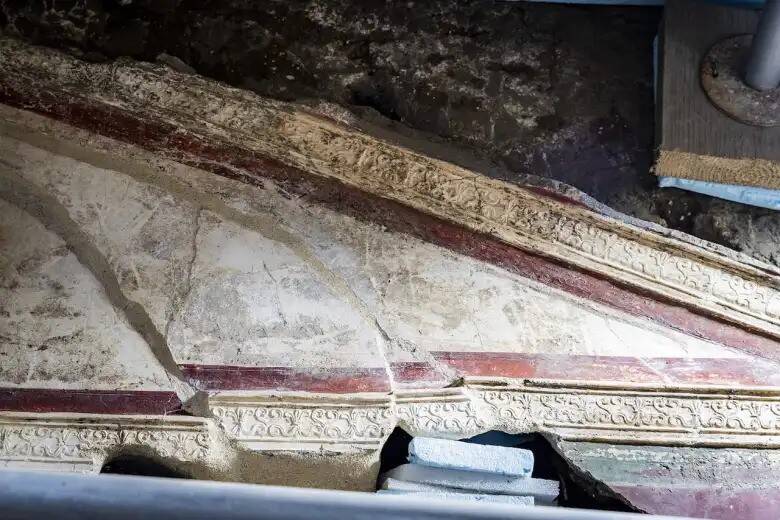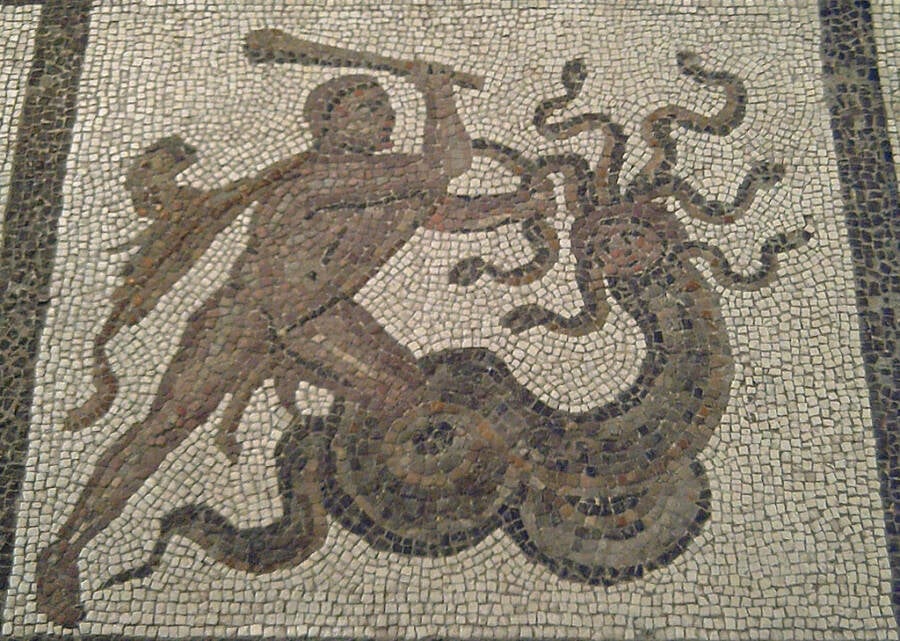Its white exterior crowned by a classic triangular pediment sitting atop a massive door gives way to a majestic interior in which frescoes depicting the Twelve Labors of Hercules once adorned the walls.

Ministero della CulturaThe temple in the Civita Giuliana area of Pompeii that probably once featured frescoes depicting Hercules’ Twelve Labors.
For years, the Civita Giuliana area of northern Pompeii was picked over by looters. Many of its treasures are now lost, likely forever, but archaeologists have nevertheless made a number of astounding discoveries at the site. During recent excavations, they even uncovered an ancient temple that may have been dedicated to Hercules.
It’s just one of many discoveries made in Civita Giuliana in recent years, all of which add to the richness of our understanding about life in Pompeii just before it was destroyed by the eruption of Mount Vesuvius in 79 C.E.
The Temple Of Hercules Discovered At Civita Giuliana
According to an announcement from Italy’s Ministry of Culture, excavations between 2023 and 2024 in Civita Giuliana have focused on an area between two previously documented sectors. On the north side is a residential area, and on the south side is a servants’ area. Recent excavations have focused on a street that ran between them.
There, archaeologists have uncovered a number of interesting sites, including a carpenter’s room and a sacellum — an area dedicated to religious worship — which is located at a “hinge point” between the servants’ area and the main residential complex.

Ministero della CulturaA detail of the temple wall. Though much of it has been destroyed by looters, it retains a hint of its former grandeur.
Based on previous data, archaeologists believe that the sacellum was once dedicated to the worship of Hercules, the iconic figure from Greek and Roman mythology famous for his unparalleled strength and his series of adventures known as the Twelve Labors.
“The room is covered with a single-pitch sloping roof, while the external front, completely plastered and painted white, has a large portal… and is surmounted by a sort of ‘tympanum’ in relief,” the Ministry explained. “In front of the enormous door there is a ramp with traces of wheels, indicating the possible use of a ceremonial chariot during the rituals.”
Archaeologists believe that the walls of the sacellum were probably once adorned with frescoes depicting the Twelve Labors — which included slaying mythological beasts like the Hydra — but “there are no traces” of them today. Sadly, they were probably destroyed by looters and treasure hunters.

Luis García/National Archaeological MuseumA depiction (from elsewhere) of Hercules and the Hydra.
“The excavation of the temple, on the one hand, is disconcerting, because it shows us the unscrupulousness with which the clandestine excavators operated, stripping almost all the walls and the interior of the room,” said Gabriel Zuchtriegel, director of the Archaeological Park of Pompeii.
He continued: “Seeing this place of worship, attached to the production area of the villa, reduced to these conditions, hurts, also because there are very few comparisons for this type of environment.”
But though Civita Giuliana has been ravaged by looters, archaeologists have made a number of fascinating discoveries there in recent years.
A Ceremonial Chariot And Other Fascinating Discoveries Made At Civita Giuliana
Civita Giuliana has been the site of many exciting discoveries in recent years. Archaeologists have found harnessed horses, human remains, quarters for enslaved people, ceramics, and, perhaps most thrillingly, an entire ceremonial chariot that was likely used in weddings and parades.

Archaeological Park of PompeiiThe ancient chariot that was discovered in Civita Giuliana in early 2021.
In 2024 alone, archaeologists working in Pompeii have also made astonishing discoveries like graffiti of gladiator battles left by children, a complex that included a restaurant and mat-making workshop, and a shrine painted a rare shade of blue.
While thousands of years have passed since the catastrophic eruption of Mount Vesuvius, discoveries like these are helping to keep Pompeii’s story alive.
After reading about the possible Hercules temple discovered at Civita Giuliana in Pompeii, look through these chilling photos of Pompeii bodies frozen in time since the eruption of Mount Vesuvius. Then, look through this surprisingly raunchy collection of Pompeii graffiti.





